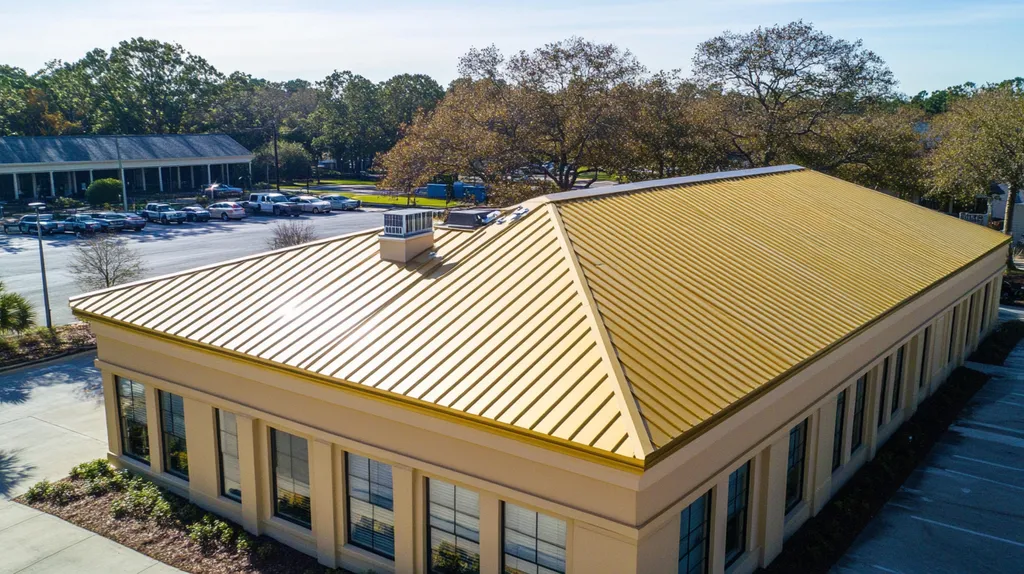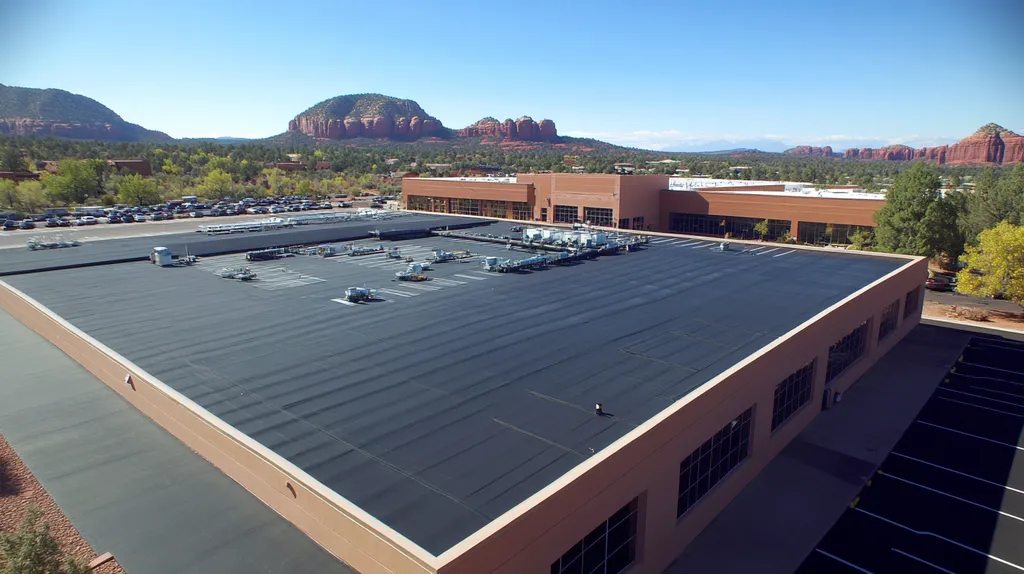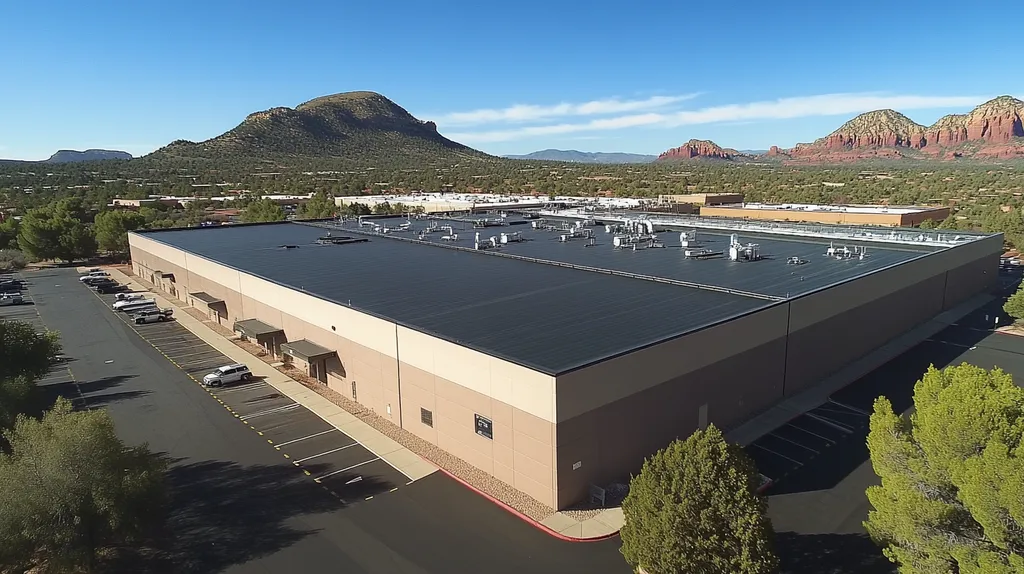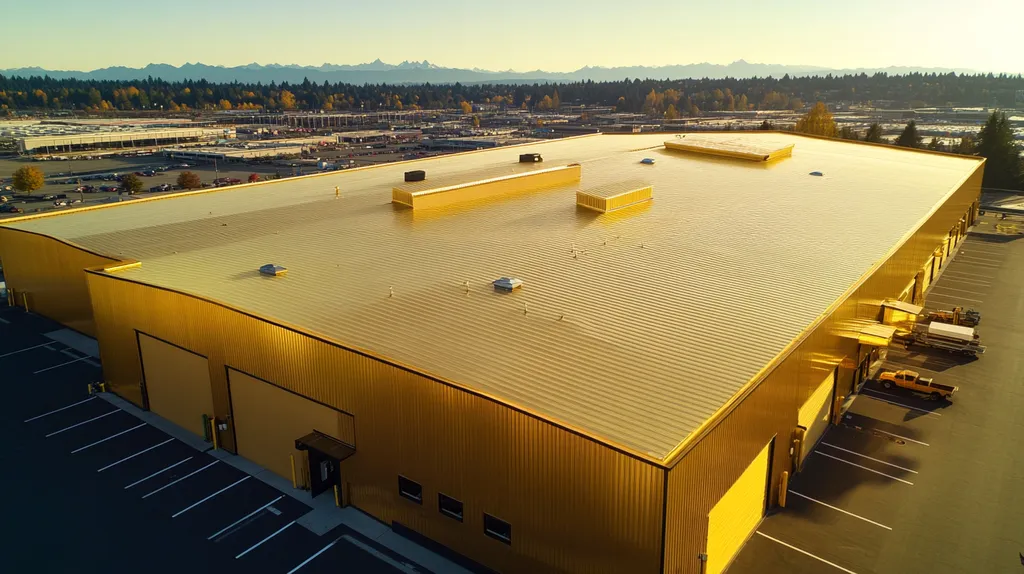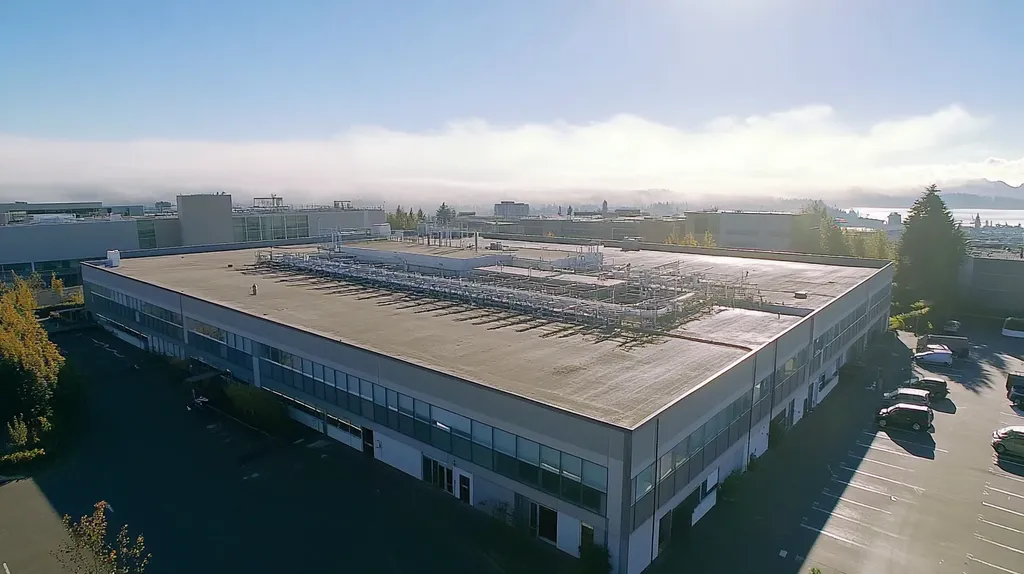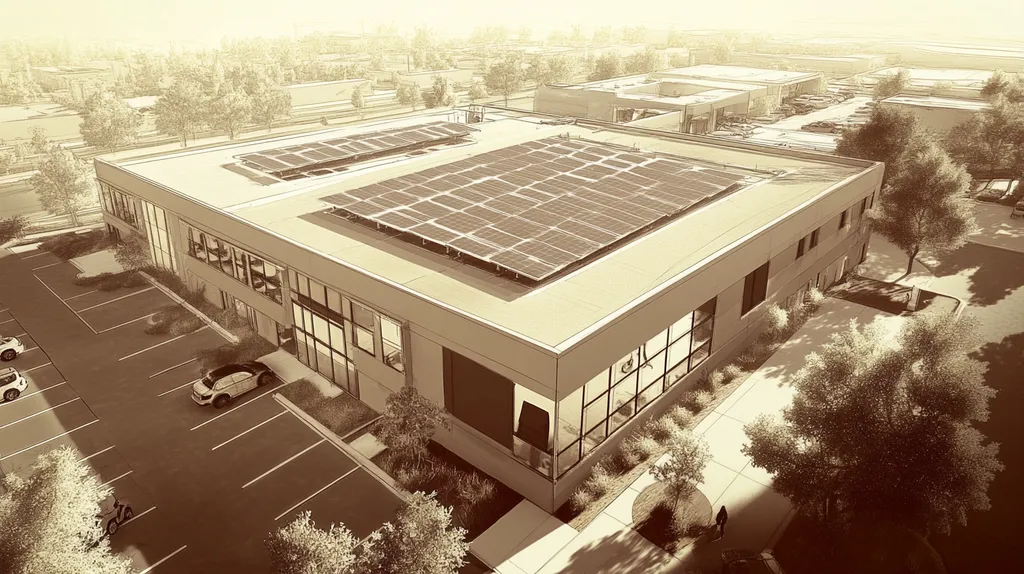In an era where industrial roofing represents billions in facility investments, coating durability has emerged as the critical factor between protection and premature failure. Studies show that 40% of industrial roof coatings fail before reaching half their expected lifespan, often due to preventable factors in material selection and application.
The evolution from simple tar applications to today’s advanced polymer systems represents a quantum leap in protective capability, yet also demands unprecedented precision in selection, installation, and maintenance.
This comprehensive guide examines the fundamental concepts, proven methodologies, and optimization strategies that determine coating performance across decades of service life.
SECTION 1: FUNDAMENTAL CONCEPTS
When the first industrial roof coatings emerged in the 1960s, they offered basic protection against the elements. Today’s coating technologies represent a quantum leap forward, yet the fundamentals of durability remain more critical than ever. With coating lifespans varying dramatically from 5 to 20 years based on material selection and environmental conditions, understanding these core concepts has become essential for protecting substantial facility investments.
Basic Chemistry of Roof Coatings
The evolution of coating chemistry mirrors the industrial revolution itself. Modern coatings rely on sophisticated polymer chains that create protective barriers through chemical bonding at the molecular level.
These chemical structures determine how coatings respond to stress. Some polymers form tight cross-linked networks for superior durability, while others maintain flexibility through looser molecular arrangements.
Understanding the chemistry helps explain why certain coatings excel in specific environments. Silicone-based products, for instance, maintain their properties even under intense UV exposure due to their stable silicon-oxygen bonds.
The chemical composition also influences crucial performance factors like adhesion strength, vapor permeability, and resistance to pooling water.
Types of Common Roof Coating Materials
The coating marketplace has evolved from simple asphaltic compounds to an array of specialized materials. Each type addresses specific performance requirements while offering distinct advantages and limitations.
Acrylic coatings represent the most widely used category, prized for their balance of cost and performance. Their water-based chemistry allows for easy application and cleanup.
Polyurethane coatings deliver superior impact resistance and weatherability. These coatings form extremely tough films that resist mechanical damage while maintaining flexibility.
Silicone coatings excel at water resistance and UV stability. Their unique chemistry allows them to maintain reflectivity and performance longer than most alternatives.
Environmental Factors Affecting Durability
The lifespan of roof coatings depends heavily on environmental exposure and maintenance practices. Proper coating selection must account for local climate conditions, pollution levels, and anticipated wear patterns. (source: Nationwide Coatings)
UV radiation represents one of the most destructive forces, breaking down chemical bonds and degrading coating performance. This impact varies significantly by geographic location and roof orientation.
Temperature cycling causes repeated expansion and contraction, testing coating flexibility and adhesion. Extreme temperature swings can accelerate aging and lead to premature failure.
Chemical exposure from acid rain, industrial emissions, and biological growth creates additional stress. These factors must be considered when selecting coating systems and establishing maintenance protocols.
SECTION 2: SYSTEM COMPONENTS
The evolution of industrial roof coating systems mirrors the advancement of architectural engineering itself. What began as simple tar applications has transformed into sophisticated multi-component systems that can extend roof life by decades. Yet this complexity brings heightened responsibility – statistics show that 40% of premature coating failures stem from misunderstanding how these components work together.
Coating Materials and Their Properties
Modern coating materials represent a dramatic departure from their historical counterparts. Where early coatings relied primarily on asphalt-based compounds, today’s systems leverage advanced polymer technologies that create molecular-level bonds with roofing substrates.
The lifespan of these coatings varies significantly based on material selection and environmental conditions. Premium silicone formulations can maintain effectiveness for 20+ years, while basic acrylics may require reapplication after 5-7 years. (source: A1 Roofing’s Kangaroof)
Temperature resistance has become increasingly critical as urban heat islands intensify. Advanced coating materials now incorporate ceramic microspheres and infrared-reflecting pigments that can reduce surface temperatures by up to 40°F.
The chemical resistance of modern coatings provides superior protection against acid rain and industrial pollutants. This evolution enables coatings to maintain their protective properties even in harsh industrial environments.
Substrate Compatibility and Interactions
The relationship between coating and substrate represents one of the most crucial yet often overlooked aspects of system performance. Different substrate materials – from galvanized steel to modified bitumen – demand specific coating formulations for optimal adhesion.
Surface preparation requirements vary dramatically by substrate type. Concrete surfaces often require acid etching or mechanical profiling, while metal substrates may need specialized primers to prevent corrosion at the coating interface.
Moisture content in substrates can significantly impact coating adhesion. Even minimal trapped moisture can lead to blistering and delamination, particularly in non-breathable coating systems.
The thermal expansion characteristics of substrates must align with coating flexibility. Mismatched expansion rates can create stress points that compromise the coating system’s integrity over time.
Adhesives and Sealants in Roof Coatings
The integration of modern adhesives and sealants has revolutionized coating system performance. These components create critical transitions between different roofing materials and seal vulnerable penetration points against water intrusion.
Contemporary sealant technologies offer unprecedented elongation properties, some capable of 1000% movement without failing. This flexibility proves essential for maintaining watertight seals despite building movement and thermal cycling.
The compatibility between sealants and coating materials demands careful consideration. Chemical interactions between incompatible products can cause degradation, compromising the entire system’s integrity.
Application timing of sealants relative to coating installation significantly impacts system performance. Proper sequencing ensures optimal chemical bonding and prevents premature failure at critical junctions.
SECTION 3: IMPLEMENTATION METHODS
The evolution of roof coating implementation mirrors the industry’s journey from simple tar applications to today’s precision engineering. While modern materials offer unprecedented protection, even the most advanced coating can fail without proper installation. Studies show that 70% of premature coating failures stem from improper application rather than material defects, making mastery of implementation methods essential for protecting massive facility investments.
Pre-Application Surface Preparation Techniques
Surface preparation has transformed from basic cleaning to a multi-stage engineering process. Today’s methodology begins with comprehensive inspection using moisture meters, infrared scanning, and adhesion testing to establish baseline conditions.
Modern cleaning protocols utilize specialized detergents and pressure washing systems calibrated to specific substrate materials. This precision approach removes contaminants while preserving surface integrity.
Substrate repairs now incorporate advanced diagnostics to identify underlying issues. Thermal imaging and electronic leak detection guide targeted repairs before coating application begins.
The final preparation stage includes careful moisture monitoring and environmental controls. Temperature, humidity, and dew point measurements ensure optimal conditions for coating adhesion.
Coating Application Methods and Tools
Application technology has evolved from simple roller methods to sophisticated spray systems that ensure uniform coverage. Modern airless sprayers deliver precise mil thickness while reducing material waste and improving worker efficiency.
Specialized tools now address complex geometries and penetrations. Brush-tip applicators and detail rollers ensure complete coverage of flashings, corners, and transitions.
Application monitoring employs digital thickness gauges and environmental sensors. Real-time data collection allows adjustments to application parameters as conditions change throughout the day.
Robotic and semi-automated systems are emerging for large-scale projects. These technologies maintain consistent application rates while reducing worker fatigue on extensive installations.
Quality Control During Installation
Quality control has progressed from visual inspections to comprehensive testing protocols. Regular adhesion tests, thickness measurements, and holiday detection ensure coating integrity throughout the installation process. (source: Karnak)
Documentation requirements now include detailed photography and digital mapping. These records create accountability and provide valuable reference points for future maintenance.
Environmental monitoring extends beyond basic weather tracking. Advanced systems measure surface temperature, ambient conditions, and cure rates to optimize installation timing.
Modern quality control incorporates non-destructive testing methods. Infrared scanning, electronic leak detection, and moisture mapping verify system integrity without compromising the coating.
SECTION 4: MAINTENANCE REQUIREMENTS
The journey from rudimentary tar-and-gravel systems to today’s sophisticated roof coatings mirrors the evolution of maintenance practices themselves. While early maintenance consisted of patching visible leaks, modern protocols demand a comprehensive approach backed by technology and data. Industry studies reveal that proactive maintenance can extend coating life by 25-50%, yet nearly 85% of commercial facilities still follow reactive approaches that lead to premature failure.
Regular Inspection and Monitoring Protocols
Modern inspection protocols have transcended the basic walkthrough, embracing digital documentation and non-destructive testing. Quarterly inspections using infrared scanning and moisture mapping now provide early warning of potential failures before visible damage occurs.
Documentation has evolved from clipboards to cloud-based platforms that track historical performance. These systems generate trending data that helps predict maintenance needs and optimize repair scheduling.
Roof access points and high-traffic areas require monthly visual inspections. These zones experience accelerated wear patterns that can compromise coating integrity if left unchecked.
Weather monitoring stations integrated with building management systems now alert maintenance teams to conditions that may impact coating performance. This technology enables rapid response to environmental threats before damage occurs.
Addressing Common Issues and Repairs
Periodic cleaning has become essential as industrial emissions and environmental pollutants threaten coating longevity. Regular maintenance includes removing debris, cleaning drainage systems, and addressing surface contamination that can degrade coating chemistry.
Field repairs now utilize specialized coating products engineered for compatibility with existing systems. These materials maintain flexibility and adhesion while providing seamless integration with the primary coating.
Ponding water represents a persistent threat that demands immediate attention. Modern solutions include installation of auxiliary drains, modification of roof slope, or application of additional coating in affected areas.
The repair of penetrations and flashings requires particular attention to detail. These vulnerable points benefit from reinforced coating applications and regular inspection to prevent water infiltration.
Preventative Maintenance Strategies
Contemporary maintenance programs integrate predictive analytics with traditional inspection methods. Regular maintenance is essential for maximizing coating lifespan, with periodic inspections and timely repairs preventing minor issues from escalating into major problems. (source: SmartSeal)
Staff training has become crucial as coating technologies advance. Maintenance personnel must understand the specific requirements of different coating types and recognize early warning signs of potential failure.
Scheduling maintenance around seasonal changes helps protect against weather-related damage. Spring and fall represent critical inspection periods when winter damage or summer heat stress become apparent.
Digital maintenance management systems now track warranty compliance and maintenance history. This documentation proves invaluable for warranty claims and helps optimize the timing of recoating or restoration projects.
SECTION 5: PERFORMANCE METRICS
When the first industrial roof coatings emerged in the 1960s, performance metrics focused solely on basic water resistance. Today’s sophisticated coating systems demand far more comprehensive evaluation across multiple performance categories, with billions in facility assets at stake. Understanding and tracking these metrics has become essential, as even a 10% decline in coating performance can slash a roof’s functional lifespan by half and drive up energy costs dramatically.
Measuring UV Resistance and Reflectivity
The evolution of UV resistance testing mirrors the advancement of coating technology itself. Where early coatings simply aimed to delay inevitable UV degradation, modern formulations maintain their protective properties for decades under intense solar exposure.
Reflectivity measurements have progressed from simple visual inspection to precise spectrophotometric analysis. Today’s instruments can detect even minor decreases in solar reflectance that signal the need for maintenance or recoating.
Modern UV resistance testing protocols simulate decades of exposure in just months. These accelerated aging chambers subject coatings to concentrated UV radiation while cycling temperature and moisture conditions.
Laboratory analysis now quantifies exactly how reflectivity changes over time. This data helps predict when coatings will require renewal to maintain their energy-saving properties.
Evaluating Water and Moisture Resistance
Water resistance testing has evolved dramatically since the days of simple ponding tests. Modern evaluation methods use sophisticated pressure differential testing to detect even microscopic breaches in coating integrity.
Electronic impedance scanning can now map moisture patterns across entire roofs. This technology identifies problem areas long before visible leaks develop, enabling targeted maintenance.
Contemporary moisture meters provide precise readings of substrate conditions. Understanding exactly how much moisture exists beneath coatings helps prevent premature failures caused by trapped vapor.
Testing now includes evaluation of coating breathability and vapor transmission. This ensures coatings can release trapped moisture while still preventing water infiltration.
Assessing Energy Efficiency Improvements
The measurement of coating energy performance has transformed from simple temperature readings to comprehensive energy modeling. Modern analysis considers factors like solar reflectance, thermal emittance, and insulating properties to predict actual cost savings.
Advanced thermal imaging now provides detailed heat maps of coated surfaces. This technology helps verify that coatings deliver their promised energy benefits across entire roof areas.
High-quality acrylic, silicone, and polyurethane coatings can extend roof life by 15-20 years while significantly reducing cooling costs through enhanced reflectivity. (source: Signature Roofing and Coatings)
Real-time monitoring systems now track coating performance continuously. These systems alert facility managers to efficiency decreases that warrant investigation or maintenance.
SECTION 6: OPTIMIZATION STRATEGIES
In the 1980s, optimizing roof coatings meant simply choosing between black or white. Today’s facility managers face an infinitely more complex decision matrix, where selecting the wrong coating system can trigger a cascade of costly failures. With coating investments often exceeding $500,000 for large industrial facilities, optimization has evolved from a good practice to an essential survival skill.
Selecting Optimal Coating Materials by Climate
The evolution of climate-specific coating formulations marks a dramatic departure from the one-size-fits-all approaches of previous decades. Modern coating selection demands careful analysis of local weather patterns, seasonal temperature swings, and anticipated exposure conditions.
Humid coastal environments require specialized coating formulations that resist salt spray and prevent moisture infiltration. These areas benefit from advanced silicone and polyurethane systems that maintain their protective properties despite constant moisture exposure.
Desert and high-altitude locations face intense UV radiation that can rapidly degrade conventional coatings. These regions demand highly reflective formulations with advanced UV stabilizers to prevent premature aging.
Regions experiencing extreme temperature fluctuations require coatings with exceptional flexibility. High-grade formulations that expand and contract without cracking significantly extend roof life by preventing water infiltration. (source: ArmorPoxy)
Cost-Benefit Analysis for Roof Coatings
Modern coating economics have transformed from simple material costs to comprehensive lifecycle analysis. Initial installation represents only 15-20% of total ownership costs over a coating’s lifespan.
Energy savings now play a central role in coating selection calculations. Premium reflective coatings can reduce cooling costs by 25-35% compared to conventional materials, often paying for their additional cost within 3-5 years.
Maintenance requirements vary dramatically between coating types. Superior formulations may cost more initially but require less frequent recoating and fewer repairs, reducing long-term expenses.
Labor costs for installation and maintenance must factor into selection decisions. Some advanced coatings offer faster cure times and simpler application methods, reducing overall project costs.
Long-Term Sustainability and Environmental Impact
The environmental implications of coating choices have evolved far beyond basic compliance concerns. Today’s high-performance coatings must balance durability with increasingly strict environmental regulations.
Modern coating technologies incorporate recycled materials and bio-based components without sacrificing performance. These innovations reduce environmental impact while maintaining protective properties.
Energy efficiency has become a primary sustainability metric. Advanced coating systems can dramatically reduce a building’s carbon footprint through improved thermal performance and reduced cooling requirements.
End-of-life considerations now influence coating selection. Some newer formulations can be recoated rather than removed, minimizing landfill impact and reducing disposal costs.
Environmental certifications have become crucial differentiators in coating selection. Programs like LEED and Energy Star provide frameworks for evaluating long-term sustainability benefits.
Looking Ahead
With over $125 billion invested annually in industrial roofing across North America, the stakes for coating durability have never been higher.
The evolution from basic tar applications to today’s advanced polymer systems represents both unprecedented opportunity and risk for facility managers.
Studies show that proper material selection, expert installation, and systematic maintenance can extend coating life by 50-100% compared to standard industry practices.
As environmental pressures intensify and energy costs continue rising, the role of durable roof coatings will only grow more critical for protecting industrial investments.
The future belongs to those who embrace these advanced coating systems not as simple waterproofing, but as integral components of their facility’s long-term performance strategy.
FREQUENTLY ASKED QUESTIONS
Q. What factors affect the durability of commercial roof coatings?
A. The durability of coatings hinges on chemistry, environmental conditions, and substrate preparation. Different coating materials react uniquely under stress, influencing lifespan. Moreover, local climate and exposure to pollution can drastically alter performance and longevity.
Q. How do substrate materials impact industrial roof coatings?
A. Different substrates dictate specific coating formulations for optimal adhesion and performance. Materials such as metal and concrete require tailored approaches, with attention to moisture levels and surface preparation to avoid future failures.
Q. What are common mistakes in applying commercial roof coatings?
A. Frequent errors include inadequate surface preparation and improper application techniques. Skipping rigorous checks and failing to account for environmental conditions can lead to premature failures, costing facilities their investments.
Q. How can regular maintenance extend the life of an industrial roof?
A. Proactive maintenance practices, such as regular inspections and cleaning, can significantly extend a coating’s lifespan. Addressing minor issues early on prevents major failures and preserves the integrity and performance of the roof.
Q. What performance metrics should be monitored for roof coatings?
A. Important metrics include UV resistance, moisture penetration, and energy efficiency. Monitoring these factors helps identify when maintenance or recoating is needed to maintain performance and energy-saving benefits.
Q. How has technology influenced the optimization of roofing materials?
A. Advances in technology have led to tailored coatings based on local climates and environmental impacts. Improved materials prioritize energy efficiency and performance, extending durability while minimizing long-term costs and environmental concerns.
Q. What emerging trends should facilities managers watch in roof coatings?
A. Emerging trends include the development of eco-friendly formulations and smart technology integration for monitoring. Tools offering real-time data on performance will become increasingly essential in managing roof longevity and sustainability.

